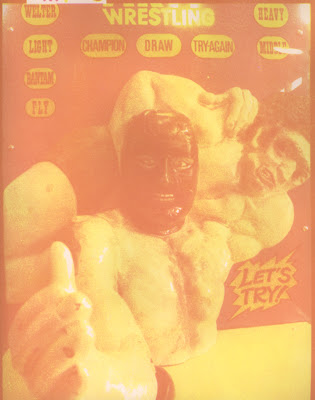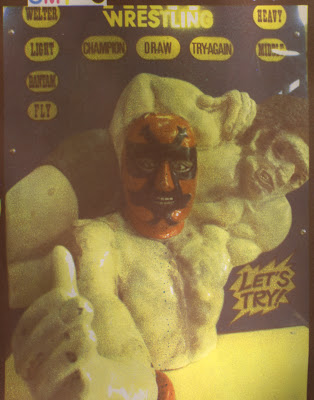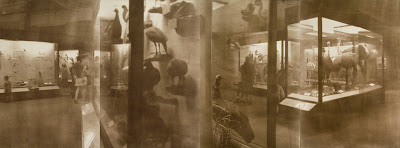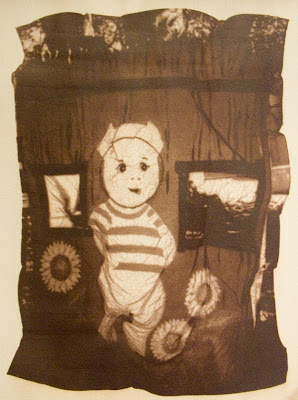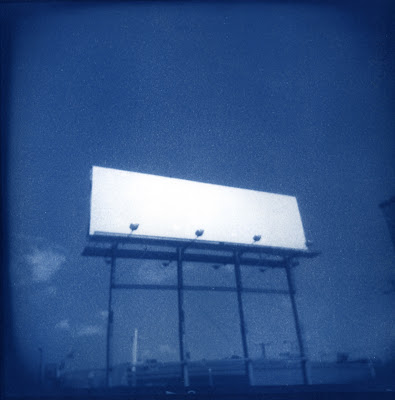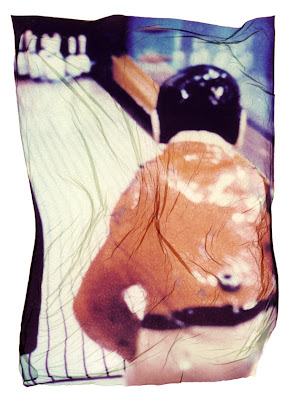I’ve been making test prints in the gum bichromate process for about a month, and while I seem to be making progress, there’s still a long way I have to go before I can start making real prints. As I mentioned in my last post, there are many more variables to test out with this process than there are with many other alternative printing processes. Fortunately, the more one works with the process, the easier it becomes to weed out unlikely causes to problems and focus on what needs to happen to correct a bad print. Even so, the process is more involved and time consuming than other processes I’ve been working with. Each color layer takes a day to coat, expose and dry, plus the paper needs to be preshrunk and sized. Each of the test prints you’ll see here involved at least five working days to make them.
What I’ve been working with so far in the gum process is mainly testing basic working methodology, exposure, and transfer curves. You might want to read
this post from last September about making transfer curves for the cyanotype process. With gum bichromate printing, this issue is tripled, because I’m trying to print in three colors on the same image. This is on top of the other variables involved with learning a new process.
Here’s the quick version of what I’ve done so far. I’ve left out a lot of details and tried not to be too technical. Send me an e-mail or comment if you want more info.
I started by creating a test image file to use when printing gum bichromates. It includes overlapping color percentage scales for cyan, magenta and yellow, a color wheel, and a sample photo. Here’s the test image I made.
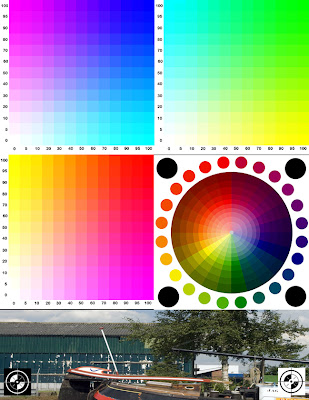
I opened this image in Photoshop, and made RGB separations. These separations I printed as negatives onto separate pieces of transparency film. The negative of the red channel is used to print the cyan gum layer, the negative of the green channel is used to print magenta cyan gum layer, and the negative of the blue channel is used to print the yellow gum layer, I decided to work in CMY, not CMYK, as I’m not concerned with accuracy in the color prints. I prefer the odd color shifts I’ll get. If I wanted accurate color, I’d just make an inkjet print of my image.
Here’s my first test print.

For this test, I tried something different that I read about online, and did a cyanotype print as my first layer (instead of a cyan gum print). The blue looks decent here. Unfortunately, the magenta and yellow are both really underexposed. None of the books or websites I’ve researched give recommended exposure times for gum prints. It’s one of those variables you have to work out for yourself.
Here’s my second test print.

Yellow and magenta exposures are looking much better here. It’s obvious I’ll need some adjustment to the transfer curve, but things are looking decent. The colors were bothering me, however. You can print gum bichromates using any color of watercolor paint mixed into the gum arabic solution. The yellow and cyan paints that came with the kit I bought didn’t seem to be working that well for me. So, I bought different colors and made a third test print.
Here’s test print number three.

The magenta and yellow layers have better color than I was getting with the previous paints. In fact they are so smooth looking here that I started doubting the wisdom of doing a cyanotype as my first layer. You can see in this print that the cyan layer is much grainier than the others, and it seems to be affecting the quality of the image. With this print, I also decided I didn’t like the paper I’ve been using for gum prints. Based on advice in a book,, I’d been using 300 lb. watercolor paper. That paper is really heavy and stiff, curls badly when it dries and has a texture so heavy that the image quality suffers.
On to test print number 4.

Two major changes were made. First, I actually made two identical prints this round, one on 300 lb paper, the other on the same 140 lb paper I’ve been using for cyanotype and VanDyke brown prints. The good news is that the 140 lb paper works perfectly fine.
The other big change is that I decided to eliminate doing a cyanotype as a first layer, and print all three layers as gum prints. The standard order is to print yellow first, magenta second, and cyan last, which is what I’ve done here.
Exposure is looking decent throughout, although the cyan layer is a little light. The bigger issue is that without the cyanotype as a first layer, the registration marks I put into the image file were completely covered by the magenta paint. I had to guess and improvise a registration method on the fly, and as a result, the layers are way out of registration. Based on this print, however, I was able to finally make adjustments to the transfer curve and print out new RGB negative separations.
Here's the first test print made with the new adjusted separations.
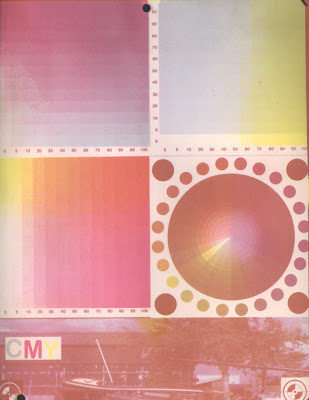
The good news here is that the magenta layer is just about perfect. I don’t think I could make it better if I tried. The bad news is that yellow and cyan are far from perfect. Because I’ve done so many of these already, it’s become much easier to figure out what I think needs to happen. Based on this test print, I think that yellow needs more exposure. Cyan, however is another story., It’s too pale and needs more watercolor paint in the gum arabic solution. I’ve been mixing at the rate of 1g paint to 5 ml gum arabic. For the next round, I’ll try cyan mixed at 1g paint to 3 ml gum.
On to test print number six. I don’t have a scan of it as it’s still in process. I exposed yellow first, at 4.5 minutes. It’s maybe slightly overexposed, but not by much. It looks pretty good. Today I printed the magenta layer, which based on the last test print,was as good as it will get. Unfortunately, the entire layer came off in the wash. I have no idea what went wrong. I did everything exactly as I did it last time, but something didn’t take. I looked up some info in books, but they say that a layer washing completely of is either the result of over-sized paper or underexposure. The size on the paper is exactly the same 1:4 gesso and water mix I’ve used all along, and the exposure was the same as well, so nether answer seems right. I’ll just have to try again.
Meanwhile, I’ve got a bunch of VanDyke brown and cyanotype prints waiting to be printed, and I recently finished several Polaroid lifts that I’ll post soon. The gum printing is starting to get frustrating, but I’m doing plenty of work oustide of that process.











